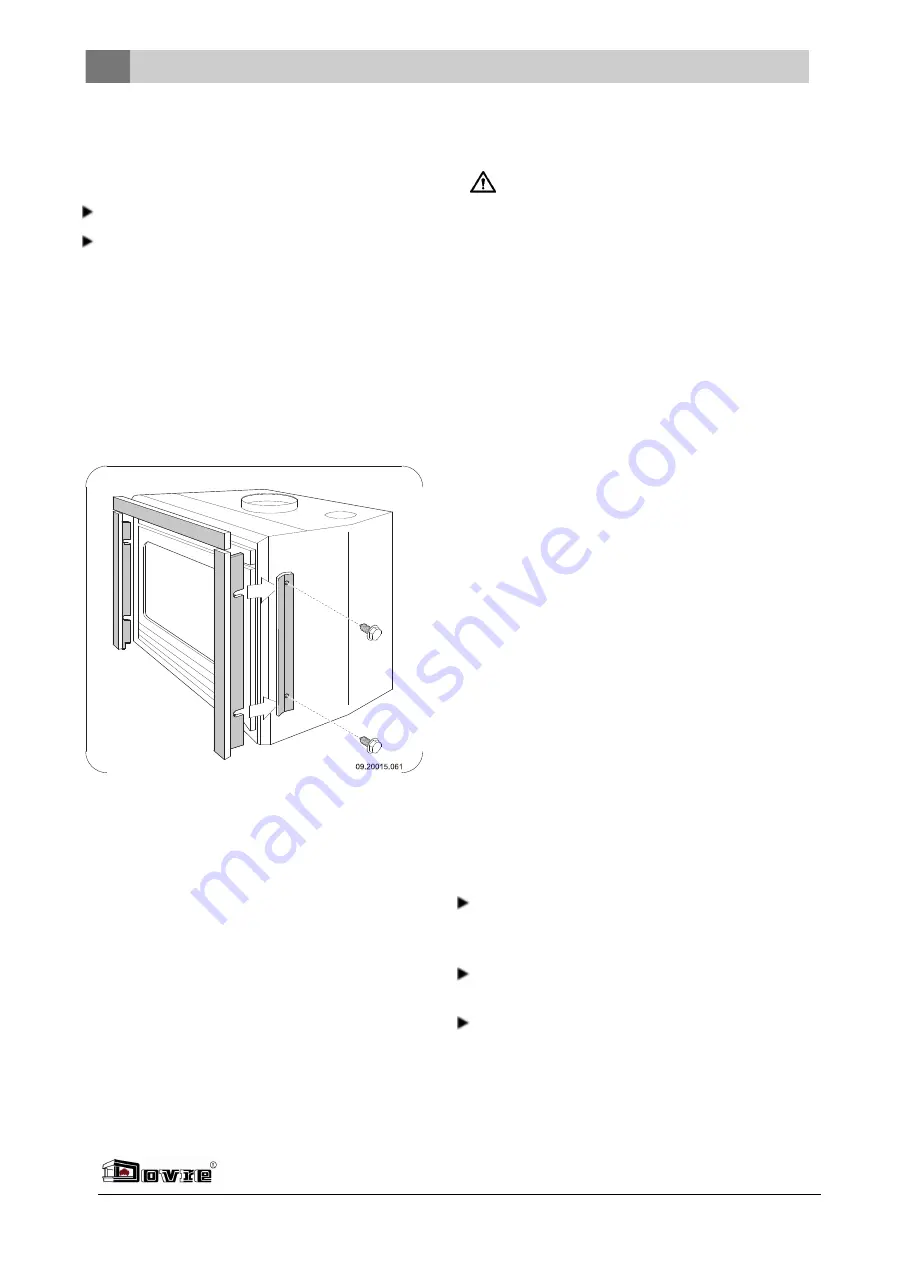
Building into a new hearth
The stove is installed in two stages:
Placing and connecting the stove
Building up the hearth around the stove.
Placing and connecting the stove
1. Put the appliance at the right height and level it.
2. If you are going to put an external casing around
the stove, you should fit the clamping plates
supplied to the sides of the appliance without fully
tightening them. This is because the outside
casing fits between the appliance and the
clamping plates; see next figure.
3. Check that there is free convection space of at
least 15 mm between the existing walls, which
must have the necessary insulation (see chapter
"Installation Conditions"), and the back of the
appliance.
4. The masonry may not rest on the stove. Use a
support such as a steel beam, if required. Leave a
clearance of at least 3 mm between the support
and the appliance.
4. Connect the appliance airtight to the flue
(chimney).
5. Check the draught in the flue and the seal of the
connection on the flue gas duct by making a small,
intense trial fire with newspaper and dry, small
kindling.
In the case of new masonry, wait until the
masonry has dried sufficiently.
6. In the case of connection to outside air: connect
the outside air supply to the connector you have
fitted to the appliance.
Tapping convection air
The appliance is equipped with two additional
connections in order to transport convection heat to
other areas.There must be air grids in these rooms. If
you wish to make use of this function, proceed as
follows:
1. Remove the two push-out plates on top of the
convection box by tapping them loose with a
hammer.
2. Fit the two connection collars supplied with a
diameter of 125 mm on the resulting openings
using the M8x16 screws and M8 bolts.
3. Connect flexible tubing with a diameter of 125 mm
to the collars and route them to the rooms.
4. Connect the flexible tubing to the outlet grates in
the rooms.
Building the new hearth
Inside the hearth you provide space for convection. In
this space the air must be able to move freely. It must
be possible for air to be sucked in for combustion, and
the air heated by the stove (the convection air) must
be able to flow freely into the space to be heated; see
next figure.
When building the hearth, follow these
instructions:
The top of the hearth must be closed airtight by
means of a cover plate of incombustible and heat-
resistant material.
The cover plate must be level and placed at least
30 cm below the flue opening in the ceiling.
If the space is not sufficiently ventilated, you must
provide for outside air to be allowed in by means of
the outside air connection kit or an optional
10
Subject to change because of technical improvements
















































